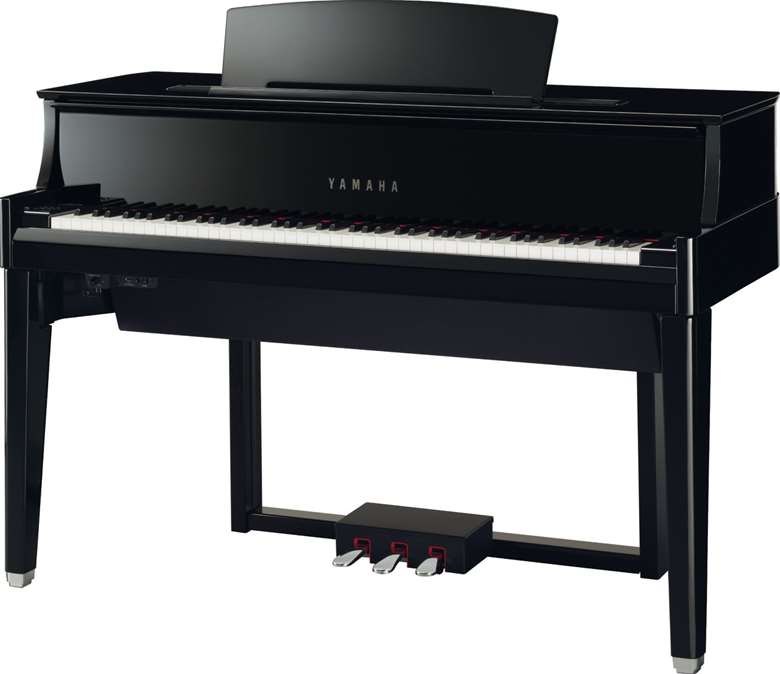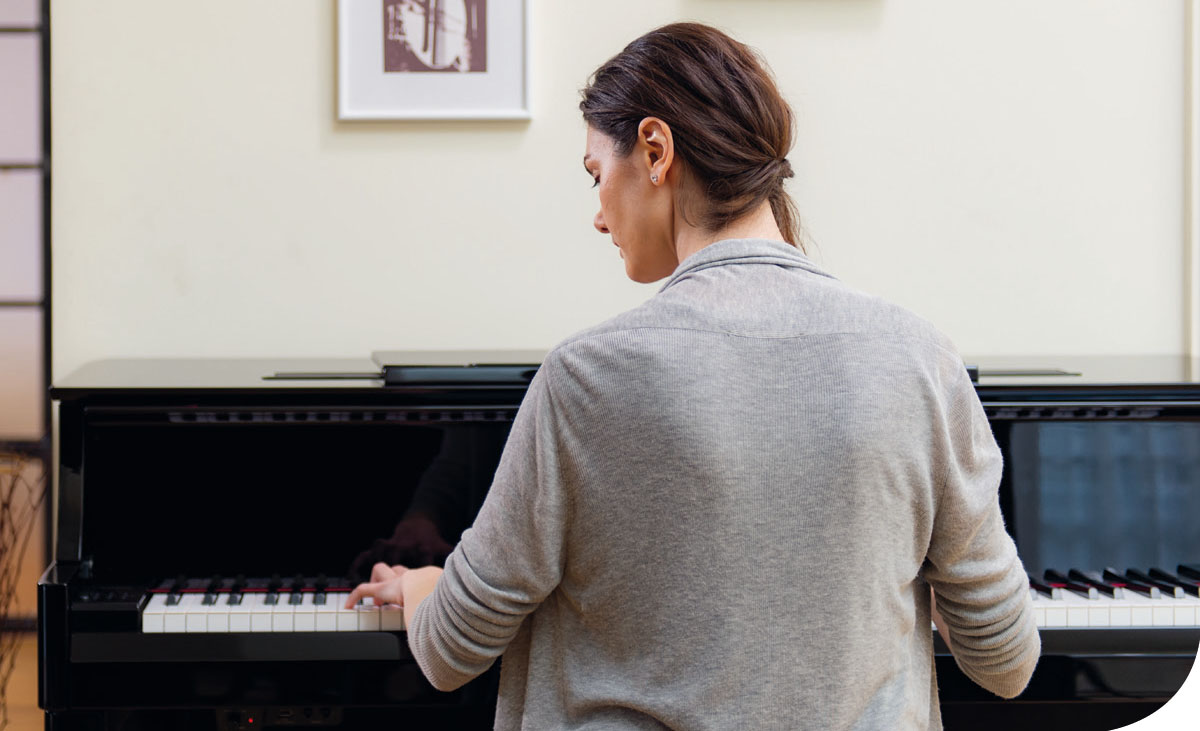Instrument Reviews: Yamaha AvantGrand
Friday, November 1, 2019
Do you dream of owning a grand piano but have the space – and budget – for an upright? Yamaha's N1X, the newest addition to the AvantGrand range of hybrid pianos, brings the sound and action of a grand in the form of an upright – with impressive results

Owning a grand piano is the holy grail for most pianists. Housing and financial restrictions mean that, even for professional musicians, these large instruments are often highly impractical, with the top-end concert grands reserved for concert halls and theatres. Imagine, then, owning not one, but two concert grand pianos – the Yamaha CFX and the Bösendorfer Imperial, both beloved by star pianists and heard on stages across the globe. Better still, both instruments can occupy the space of an upright piano. No, this isn't some Harry Potter-style wizardry, it's the N1X, the latest addition to Yamaha's AvantGrand range of hybrid pianos, bringing the sound of two concert grand pianos in the form of a single upright.
‘If you are looking for the response of a grand piano but the size of an upright then this is the piano for you,’ says Ian House, Yamaha's piano and keyboard specialist. ‘The N1X blurs the lines between the two instruments.’ And the promise of those two concert grands? Either the Yamaha CFX or the Bösendorfer Imperial can be summoned at the touch of a button. A real acoustic piano action is matched with an accurate multi-sample sound set that draws on the two concert grand pianos. This is then reproduced through a high-performance speaker system that has been created to ensure that the projection is virtually identical to an acoustic instrument.
Organic sound
The N1X joins the N3X, N2, and NU1X in the AvantGrand family. It combines all the pros of a digital instrument with the action of an acoustic. ‘However good an upright piano is, it's always a compromise because the keyboard action is not as detailed as a grand piano,’ says House. ‘The N1X changes that.’ Under each key is a continuous optical sensor – this doesn't affect the feel or performance in any way – that captures the speed and depth at which that key is depressed. An additional optical sensor affixed to each hammer shank measures the timing and strength of the hammer hitting the virtual ‘strings’. This information is instantly translated into beautifully authentic sound reproduction. ‘When you press a key, the resonance is organic. You get so much more than just the sound,’ says House. ‘The action is identical to that of a Yamaha grand; it's a grand piano action within an upright. It's incredibly responsive.’
Since Yamaha introduced the first AvantGrand, hybrid pianos have grown in popularity. As the name suggests, the instruments bring together elements of digital and acoustic instruments, giving the pianist more options than ever before. The first model of AvantGrand was released in 2011; then, as today, it broke new ground within the piano world. For the first time on a hybrid instrument, the touch was the same as an acoustic. It meant that students who were learning on an acoustic grand did not need to adjust their technique, and that pianists could enjoy the same level of performance from a digital instrument as an acoustic.
‘In the past, digital pianos have had their limitations,’ says Noriko Ogawa, renowned international concert pianist, recording artist, presenter and educator. ‘The action has felt artificial – too light, singular, and the sound was either on or off. For pianists used to acoustic instruments, the digital keyboards felt like a different species! The action on the AvantGrand pianos feels so real and the sound is great. I really believe that these instruments are the next best thing after having a top-of-the-range grand piano at home.’
The newest AvantGrand instruments – including the N1X – have more resonance than their predecessors, which replicated the sound of the CFIIIS. This resonance is achieved by something known as Virtual Resonance Modelling, which calculates the various states of the strings for each of the 88 notes on the keyboard from one instant to the next. This highly complex process means the N1X can reproduce the limitless number of resonances inherent in playing an acoustic grand, such as which keys are pressed, the strength with which the keys are played and pedal timing.
Long-term benefits
The maintenance costs surrounding a grand piano are not to be sniffed at: most instruments need tuning on a regular basis, especially after having been moved (or a particularly heavy Liszt-based rehearsal). AvantGrand pianos never need tuning. ‘As a professional pianist I like acoustic pianos best, but it's important to remember that these pianos go out of tune easily, plus strings break, actions wear out, pedals squeak – and so on,’ says Ogawa.
As technology continues to develop apace, so Yamaha has brought its AvantGrand instruments up-to-date, although the hybrid pianos do not feature all the bells and whistles of some of the digital instruments. The idea is that these pianos sit equidistant between acoustic and digital worlds; to that end, the N1X boasts a discreet control panel on the left-hand side of the keyboard. This portal opens up the delights of the digital instrument.
‘The ability to stream audio wirelessly through Bluetooth is useful particularly if you're using YouTube tutorials or rehearsing with a pre-recorded orchestra, for example,’ explains House. ‘The recording options are ideal for practising – you can record your left hand, then slow it down while you practise your right hand. Any recordings can be saved and shared through Dropbox.’ It's even possible to connect mobile devices wirelessly, with a dedicated app – ‘Smart Pianist’ – to control the functions with your iPhone or iPad.
Perfect practice
There's also the option to connect two sets of headphones for duetting. This has transformed the appeal of these instruments, opening them up to students who need to practise at unsociable hours. The sound heard through headphones uses piano samples recorded by specialised microphones that capture locational information and other nuances – known as binaural sampling – to ensure that the result is so natural you won't think you're wearing headphones at all.
‘Several music colleges use the AvantGrand instruments as practice pianos,’ says House. ‘Like our TransAcoustic and Silent Piano range, the AvantGrand aims to bring realism to pianists who, for whatever reason, can't always play an acoustic grand.’ That realism extends to the pedals, which have also been significantly improved since the early models. ‘The right-hand pedal is weighted differently to recreate the sense of dampers moving – that replaces the previous half-damper feature,’ explains House. You can even use half-pedal techniques, offering further flexibility.
Ogawa believes it is a wholly positive step that instrument makers like Yamaha are developing Cristofori's piano in a way that opens it up to new audiences. ‘Yamaha makes “proper” concert grand pianos – they know what pianists need,’ she says. ‘Pianists appreciate that flexibility is important.’
The N1X – along with the other AvantGrand pianos – are available from a range of music stores throughout the UK, as well as in Yamaha's flagship store in Soho, which is well worth a visit for its sublime piano boutique (be warned, you may never want to leave!). It's also worth noting that the AvantGrand instruments – starting from £5,265 SRP – look good, too; they are beautifully constructed and work as a great piece of furniture.


